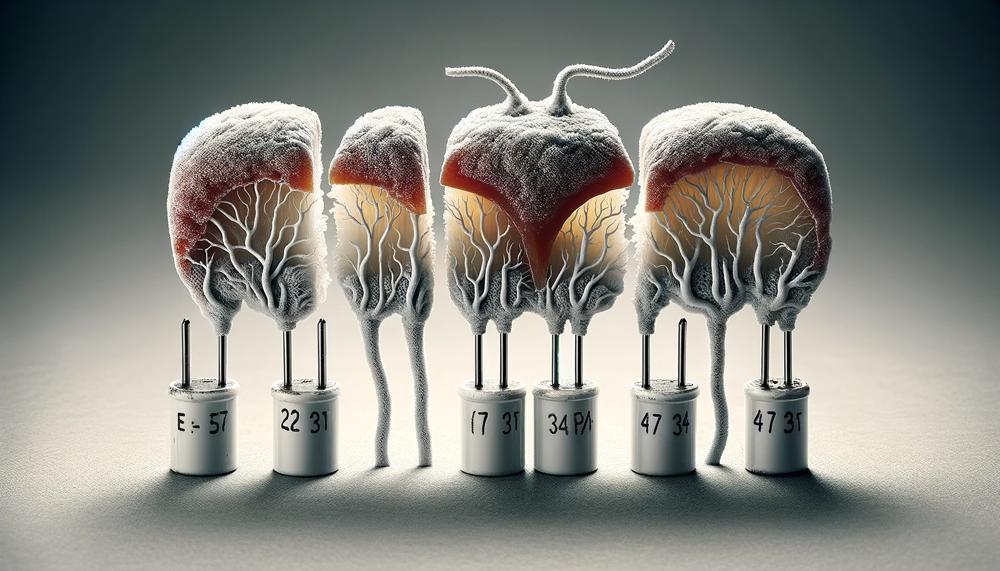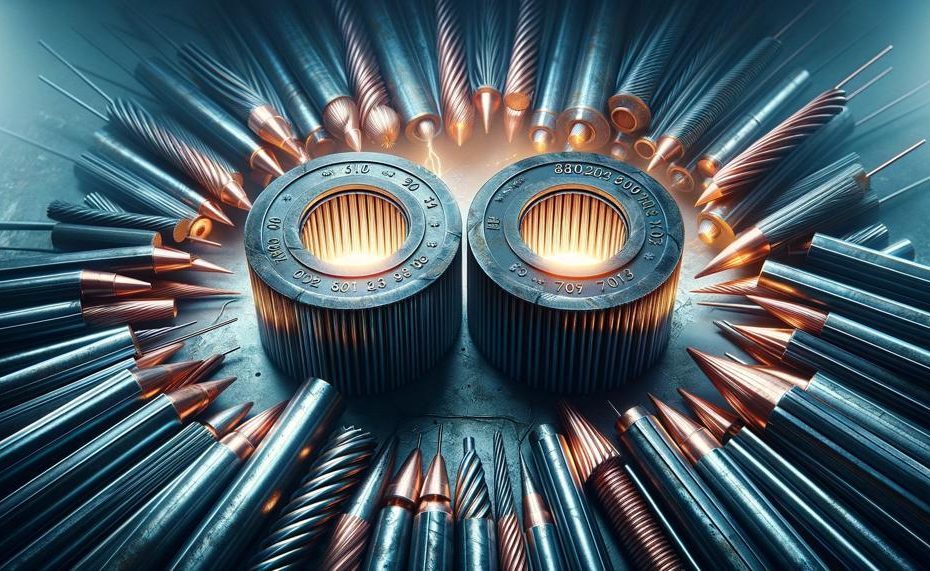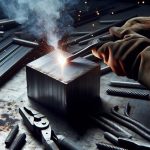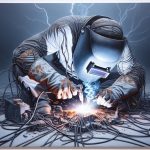Are you tired of constantly juggling between welding rods, trying to find the perfect one for your project? Well, your search ends here. Today, we are going to dive into a detailed comparison of two popular welding rods – 8010 and 701These rods have been trusted by welders in various industries and have stood the test of time with their reliability and efficiency.
So, is 8010 stronger than 7018?
WeldingWeb claims that while E7018 is harder, E8010 is stronger. This implies that with a little lower strain, E7018 welds will start to stretch and finally fracture. The minimum tensile strength of E7018 electrodes is 70,000 pounds per square inch. Stronger rods that can sustain 80,000 psi are E8010 and E8011. Because they can achieve complete penetration, E7010/E8010 electrodes have an advantage over E7018 electrodes. The E8010 is a low alloy steel cellulose covered electrode. Deep penetration welding in all locations is its specialty, particularly for vertical down welding of high strength pipes. For the purpose of welding high strength steels and applications requiring 1% nickel, E8018 is a low hydrogen electrode. It has good arc properties, low spatter, fast slag removal, high deposition, and wetting action.
Contents
8018 welding rod
The main differences between the 8010 welding rod and the 7018 welding rod lie in their composition and applications.
The 8010 welding rod contains higher amounts of manganese and silicon, making it a popular choice for heavy-duty applications like construction and shipbuilding. Its high tensile strength and low hydrogen content coating create strong and durable welds that can withstand tough conditions.
On the other hand, the 7018 welding rod has lower levels of manganese and silicon, making it more versatile for all positions. Its coating has better elongation properties, making it a suitable choice for thinner materials.
However, it is important to note that the strength of a weld using either rod also depends on other factors such as base metal type and welding technique used. Therefore, while the 8010 welding rod is generally considered to be stronger due to its composition, there are other factors that can influence the strength of a weld.
E8018 electrode specification
When it comes to welding electrodes, not all are created equal. The E8018 and E7018 electrodes may both be classified as low-hydrogen electrodes, but their compositions and applications make them unique in terms of strength. While they share some similarities, the differences between these two electrodes can greatly impact the outcome of a welding project.
Perhaps the most notable difference between the E8018 and E7018 electrodes is their tensile strength. The E8018 boasts a higher tensile strength of 80Ksi, surpassing the E7018’s 70Ksi. This means that the E8018 electrode can withstand higher levels of stress and pressure, making it ideal for heavy-duty welding jobs.
The composition of these electrodes also plays a significant role in their strength. The E8018 electrode has a higher amount of iron powder in its coating, contributing to its increased strength. This results in a slightly higher deposition rate, making it more efficient for larger projects. In contrast, the E7018 electrode has a lower iron powder content and a higher concentration of cellulose and potassium, making it easier to strike an arc and providing better stability during the welding process.
Aside from composition, the position in which these electrodes are used can also affect their strength. The E8018 electrode is designed for flat and horizontal welding positions, while the E7018 can be used in all positions. This means that if a welder needs to work in different positions, the E7018 electrode may be more suitable despite its slightly lower tensile strength.
8018 welding rod Types
There are two main types of 8018 welding rods: E8018-B2 and E8018-CThese electrodes are categorized as low hydrogen rods, meaning they have minimal moisture and create strong welds with low levels of hydrogen-induced cracking.
E8018-B2 is a high-strength welding rod primarily used for welding carbon-molybdenum steel, such as ASTM A182 F2It is also suitable for welding various low alloy steels, like ASTM A387 Gr. 11 or 1This electrode has a tensile strength of approximately 90,000 PSI, making it stronger than the commonly used 7018 electrode.
On the other hand, E8018-C3 is a medium strength electrode used for welding carbon-molybdenum steels and low alloy steels with higher carbon content, like ASTM A387 Gr. 2It has a tensile strength of around 70,000 PSI, which is comparable to the strength of the 7018 electrode.
To compare the strengths and applications of these different welding rods, refer to the table below:
| Welding Rod Type | Tensile Strength | Applications |
| E8018-B2 | ~90,000 PSI | Carbon-molybdenum steel (ASTM A182 F22), various low alloy steels (ASTM A387 Gr. 11 or 12) |
| E8018-C3 | ~70,000 PSI | Carbon-molybdenum steel (ASTM A387 Gr. 22), low alloy steels with higher carbon content |
| 7018 | 70,000 PSI | General purpose welding for various steel types and thicknesses |
8018 welding rod chemical composition
The chemical makeup of 8018 welding rods is predominantly composed of iron powder, which significantly increases its deposition rate, resulting in faster and smoother welding. This addition of iron powder also adds to the rod’s durability and strength, making it a suitable option for high-stress welding applications.
Aside from iron powder, 8018 welding rods also contain low levels of carbon, manganese, and silicon. These elements are essential in producing robust and sturdy welds with minimal porosity and cracking. The low hydrogen coating of the rod also plays a crucial role in its strength by preventing hydrogen-induced cracking, ensuring reliable and long-lasting welds.
Compared to the widely used 7018 welding rod, which has a tensile strength of 70,000 PSI, the 8018 welding rod is typically stronger with a tensile strength of 90,000 PSI. This is due to its higher iron content and low hydrogen coating, making it a top choice for heavy-duty welding jobs. Additionally, the low hydrogen coating allows for cleaner welds with less porosity, resulting in even stronger and more dependable welds.
Furthermore, the E8018 welding rod’s versatility is unmatched as it can be used in all positions, from flat to overhead welding. Its adaptability in both AC and DC+ current also adds to its strength by providing better control and stability during the welding process.
8018 welding rod meaning
The number 8018 in 8018 welding rods is not just a random sequence of digits.
Rather, it holds crucial significance as it represents the low hydrogen content and iron powder coating of these rods. This unique combination of properties makes them particularly well-suited for use on high-strength, low alloy steels.
The use of 8018 rods results in welds that are stronger and more durable than those produced with 7018 welding rods. How does this happen?
Well, the higher concentration of iron powder in 8018 rods increases the deposition rate, creating a smoother arc and resulting in better fusion and overall strength of the weld. Additionally, the low hydrogen content plays a vital role in preventing hydrogen-induced cracking, which can compromise the weld’s integrity.
As a result, 8018 welding rods are highly sought after for demanding welding applications where strength and durability are essential.

8018 welding rod uses
8018 welding rods have a wide range of uses, making them a popular choice in different industries. These include:
- Structural Welding: Professionals often use 8018 welding rods for structural welding projects like construction and shipbuilding. Their high strength and low hydrogen content make them ideal for welding beams, columns, and other structural components.
- High-Strength Steel Welding: Designed specifically for high-strength, low alloy steel, the 8018 welding rod is a preferred choice for welding critical components like pressure vessels, heavy equipment, and high-tensile pipes.
- Low Temperature Welding: The 8018 welding rod has exceptional notch toughness at low temperatures, making it a top choice for welding in cold environments. This makes it particularly useful in the oil and gas industry where low-temperature welds are often necessary.
Strength Comparison:
Compared to other welding rods like the 7018, the 8018 stands out for its superior strength and durability. With a tensile strength of 70 to 80 Ksi, it is a go-to option for welding high-strength materials. In comparison, the 7018 welding rod has a tensile strength of around 70 Ksi.
Moreover, the low hydrogen content of the 8018 results in stronger welds with lower risk of cracking or defects. This makes it highly sought after for critical welding projects where strength and dependability are paramount.
Overall, the 8018 welding rod is a versatile and powerful tool that offers excellent strength and durability in various applications.
8018 welding rod amperage
When trying to determine the appropriate amperage for stick welding, there are a few important factors to consider. These include the thickness of the base metal, the diameter of the welding rod, and the type of flux coating used. Each of these elements plays a crucial role in determining the recommended amperage for a particular welding job.
When working with either an 8018 or 7018 welding rod, the recommended amperage will vary depending on the thickness of the base metal. However, due to differences in their flux coatings, the amperage for an 8018 welding rod may differ from that of a 7018 welding rod.
As a general rule, the recommended amperage for an 8018 welding rod will be higher than that of a 7018 welding rod. This is because 8018 rods have a higher deposition rate and require more heat to melt and create a strong weld.
For a better understanding of the recommended amperage for different welding rod sizes, refer to the table below. This table displays the amperage range for various rod diameters and metal thicknesses:
| Welding Rod Diameter | Metal Thickness Range | Recommended Amperage Range |
| 3/32” | 1/16” – 1/8” | 60 – 90 amps |
| 1/8” | 3/32” – 3/16” | 100 – 140 amps |
| 5/32” | 1/8” – 1/4” | 150 – 190 amps |
| 3/16” | 1/4” – 3/8” | 200 – 250 amps |
| 1/4” | 3/8” – 1/2” | 250 – 350 amps |
| 5/16” | 1/2” – 5/8” | 350 – 450 amps |
| 3/8” | 5/8” – 3/4” | 450 – 500 amps |
| 1/2” | 3/4” – 1” | 500 – 600 amps |
E8018 Rod Welding Positions
The E8018 welding rod is a highly versatile option for tackling complex welding tasks, as it can be used in all positions – flat, horizontal, vertical, and overhead. This sets it apart from the recommended 7018 rods, which are limited to flat and horizontal positions.
The key factor behind this versatility lies in the E8018’s high deposition rate and low hydrogen coating, making it suitable for a wide range of positions.
In contrast, the 7018 rod’s cellulose-based coating is best suited for flat and horizontal welding. It is also worth noting that the E8018 rod can be used with both AC and DC+ current, while the 7018 is typically restricted to AC or DC- current only.
Overall, the E8018 presents a more flexible solution for welding positions compared to its counterpart.
| Welding Position | E8018 Rod | 7018 Rod |
|---|---|---|
| Flat | ||
| Horizontal | ||
| Vertical | ||
| Overhead |
7018 vs 8018 Welding Rod
When it comes to welding, selecting the appropriate electrode is crucial for achieving robust and high-quality welds. Two popular options are the 7018 and 8018 welding rods, both classified as low hydrogen electrodes.
However, they have notable differences in terms of strength and performance that make them suitable for different welding applications.
| Welding Position | E8018 Rod | 7018 Rod |
|---|---|---|
| Flat | ||
| Horizontal | ||
| Vertical | ||
| Overhead |
Overall, both the 7018 and 8018 welding rods are valuable tools for welders, with unique strengths and uses.
Conclusion
To sum up, after a thorough comparison between the two widely used welding rods – 8018 and 7018 – it is evident that the 8018 rod reigns supreme in terms of strength and durability.
Its high iron content and low hydrogen coating make it the go-to choice for heavy-duty projects that demand maximum tensile strength and impact resistance.
Moreover, its adaptability to various positions and ability to produce clean welds with minimal porosity further solidify its position as the ultimate champion in overall strength.





